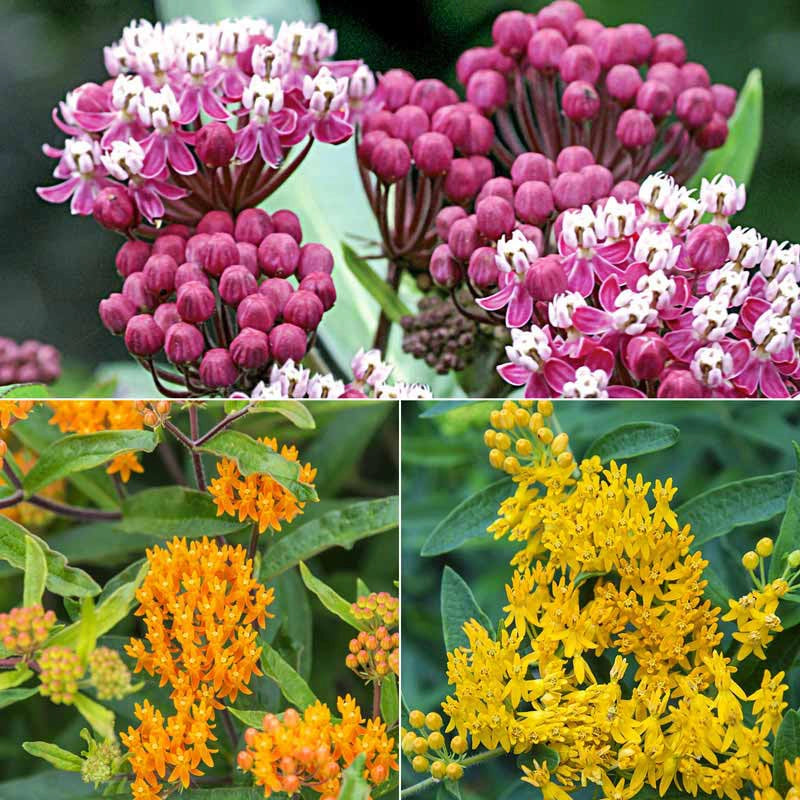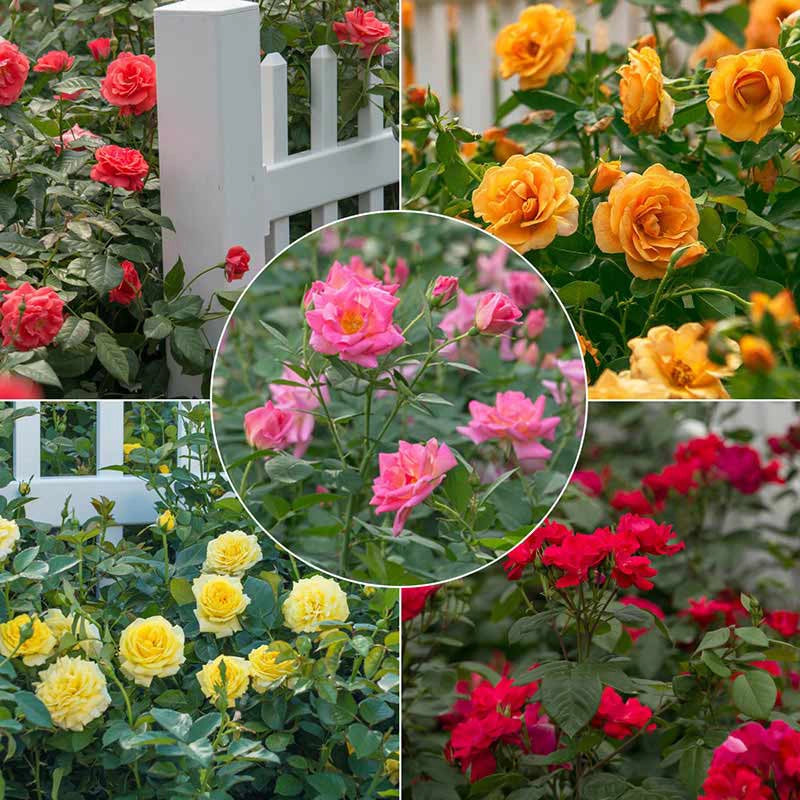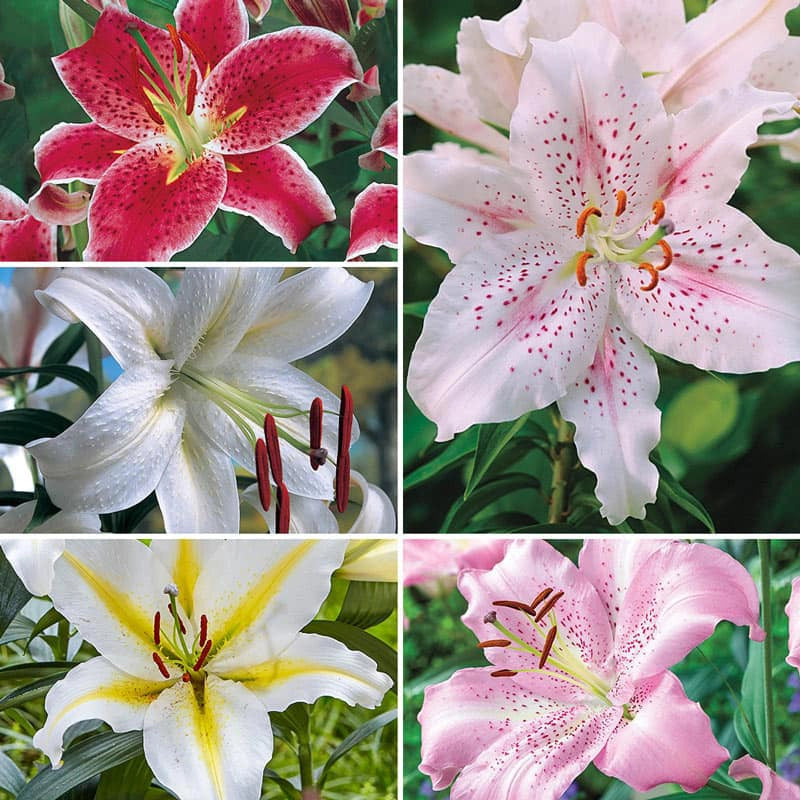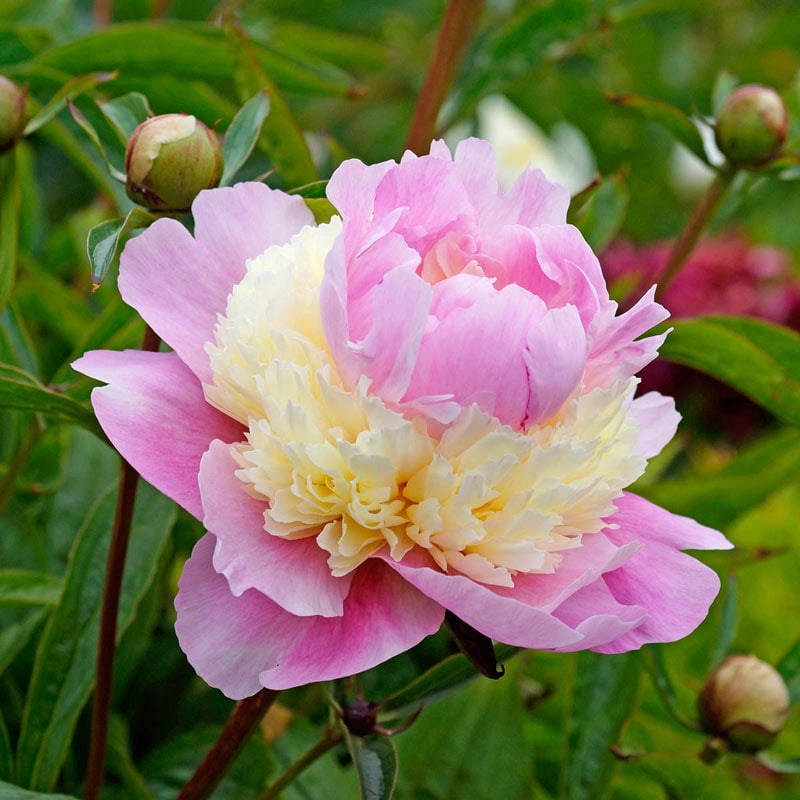4 products
-
Native Milkweed Selections
 Native Milkweed Selections
Native Milkweed Selections- Regular price
-
5 for
$20.99 - Regular price
-
$27.99 - Sale price
-
5 for
$20.99
-
Freedom Rose Sampler
 Freedom Rose Sampler
Freedom Rose Sampler- Regular price
-
Starting at
$90.99 - Regular price
-
$129.99 - Sale price
-
Starting at
$90.99
-
Parfum De Bloom™ Fragrant Lily Collection
 Parfum De Bloom™ Fragrant Lily Collection
Parfum De Bloom™ Fragrant Lily Collection- Regular price
-
15 for
$56.99 - Regular price
-
- Sale price
-
15 for
$56.99
Spring Hill's carefully curated garden collections bring together plant varieties that look and perform their best growing alongside each other, so you don't have to spend any time finding the best companions or complimentary varieties for your favorite garden plants. All you need to do is pick your favorites from our pre-planned garden lineup, order your favorite flowers, plant and watch them infuse your space with delightful color and beauty.
What Are Garden Collections?
Garden collections take the guesswork out of mixing and matching plants for your gardens. Each of our curated collections contains varieties that look great together, and that share similar sun and climate requirements. Spring Hill's garden collections are put together by our in-house growers, botanists, and designers, and contain many of our favorite classic and on-trend plants. Some contain multiple species, like our shade-loving collections of hostas, toad lilies, heuchera and other shade-friendly plants. Others include multiple varieties of one species, to create a full bed of your favorite plant—such as groups of lavenders, daylilies, or peonies created to complement each other nicely. Some of our Garden Collections are available at a discount, compared to the cost of purchasing those plants individually. Fill your beds or borders with these smart selections, and save some money in the process.
How Do You Properly Lay Out a Garden Collection?
Garden collections take the decisions out of selecting plants—but you'll still use your creativity to create the perfect layout! This is the fun part. Measure the space of your bed, border, or whatever planting area you choose. You'll also need to know the correct spacing for your varieties. Then, put the two together to block off each part of your planting area for properly-spaced plants. Try using graph paper, or get techy with a garden layout app or design website.
As you design, consider the following:
- How will your garden space be used? Are you planting near a patio, where you want your favorite varieties nearest to you? Are you planting in an area where kids or pets might run around, so you'll need to avoid planting anything underfoot?
- From which angle will the garden be viewed? Place shorter plants in the front of the planting area, and taller plants in the back. Or, use taller perennials to obstruct the view of roots or foundations that you'd rather hide.
- What colors are already blooming in your garden, and where would you like your new flowers to complement those tones? Do you need more brightness in one location, or are you looking to create a foliage garden or monotonal display?
- What plants and structures already exist in your garden? If you're planting around your beloved heirloom rosebush, be sure to give that favorite adequate space. If you have a pond or water feature, consider whether any of your plants will tolerate placement next to that wetter area.
- Are you planting any varieties that may spread over the growing season? Allow a bit of extra horizontal space to ground cover varieties and plants that will naturalize.
- Are there any special climates within the climate of your landscape? A place where water always pools, or an area that seems to attract tons of pollinators? Consider the microzones of your yard.
Laying out a garden is one of the most enjoyable, and personal, pieces of gardening. With the right plants on hand, you'll be a true designer quickly enough.
How To Prepare Your Soil for a Garden Collection
Whether your pre-planned garden will go into a new area or revitalize an older planting space, the keys to preparation are aeration and soil testing. This is especially true if you haven't fertilized an area in several years, or if you're creating a new planting space.
Make sure to break your soil up well to allow roots to grow and to keep water from pooling. If you're starting a brand new garden, begin by clearing out rocks and debris, and removing any grass or weeds from the top of the soil. In early spring, you can warm cold ground by placing plastic sheeting over the area a few hours before digging, in order to warm the soil and loosen any grass or weeds. Use a hoe or garden claw to dig several inches into the planting area, breaking up any hardened or clay spots.
Next, you'll need to make sure the soil is the right pH, and the right texture, for your garden collection. Most flowering plants prefer a slightly acidic soil, but that's not a hard and fast rule, and some flowers, like hydrangeas, actually see visible changes due to soil acidity. Pay attention to the soil as you loosen it. If your soil is particularly clay heavy—if it doesn't crumble easily, and sticks together—amend it with a draining substance like loam. If your soil is very sandy, you may need to add mulch or compost to infuse more nutrients into your garden. Test the soil pH, too, by using an at-home test or contacting your local extension office.
If you're planting in containers or a raised bed, store-bought potting soil or topsoil may be the right solution to start fresh in your garden.
How To Plant a Garden Collection
Another nice aspect of pre-planned garden collections—these groupings include plants that should be planted at the same, or similar, times. Planting requirements for any garden collection is dependent upon the types of plants in the collection. We recommend setting out all your bulbs or perennials before you begin planting, so that you can make any needed changes to your layout. Do this after your soil is prepared, and you'll be ready to plant.
How To Care For Your Garden Collection
Caring for each garden collection will be dependent upon the plants it contains. Most collections include plants with similar fertilization and soil needs, so check to see whether and how to apply fertilizer, mulch, or compost each season. If all of the plants in your garden collection tend to bloom at once, mix in other plants that bloom at different times of year to keep the display going. And, if any of your plants are biennials or short-lived perennials—if they will need replacing after a few seasons—make a plan to swap out those varieties for something new, or to replace them. Most of our garden collections contain perennials and bulbs that will stun and delight for years to come. With the selection out of the way, you can get to the fun part of planting and enjoying.





